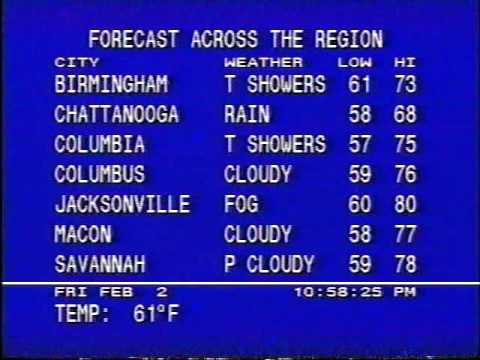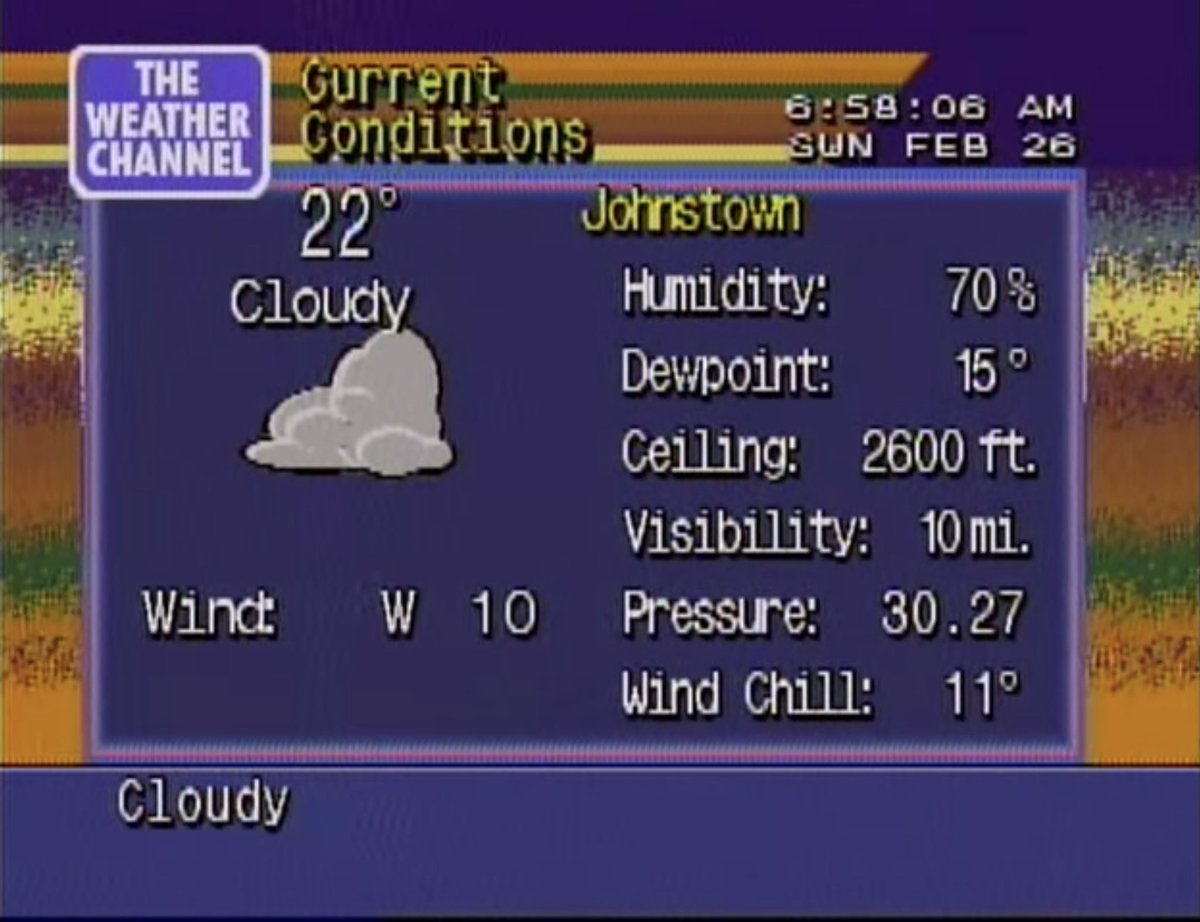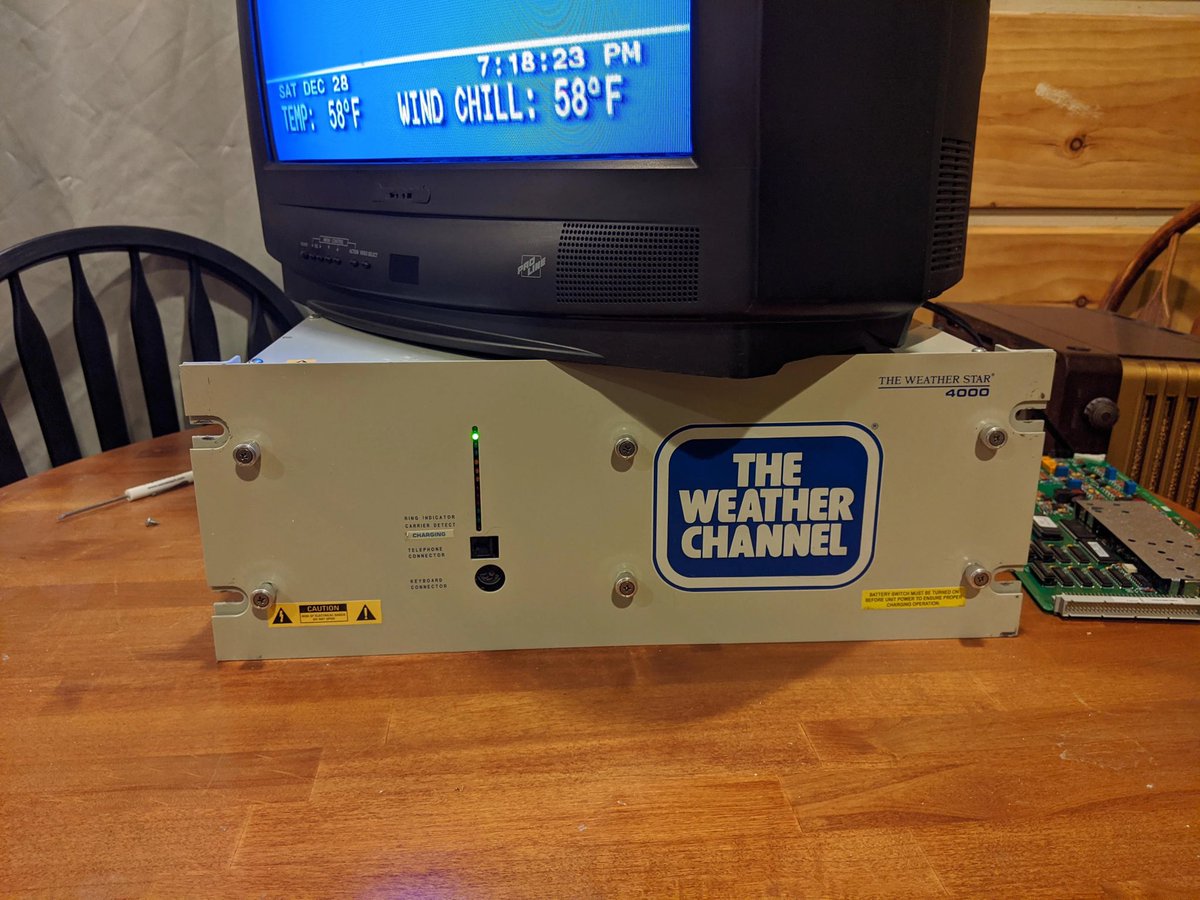
To start, here’s a bit of a backstory:
Many of you may remember a certain channel on cable dedicated to providing weather information 24 hours a day, 7 days a week. That channel was known as (oh boy, what could they have possibly named it?) “The Weather Channel”.
Many of you may remember a certain channel on cable dedicated to providing weather information 24 hours a day, 7 days a week. That channel was known as (oh boy, what could they have possibly named it?) “The Weather Channel”.
The Weather Channel, contrary to popular belief, was a nationally broadcast cable network (much like CNN) based out of Atlanta, GA. TWC came online in 1982 by Landmark Communications, a large media company that owned many newspapers and television stations.
Before launch, The Weather Channel quickly realized they had a problem. The United States is a large country, with weather patterns that vary from state to state, and even from city to city. A national network wouldn’t be able to provide forecasts for every city at once.
And that’s where the “Weather STAR” comes in.
Prior to launch, The Weather Channel spent years developing a computer called the “Weather STAR” (Star stands for Satellite Transponder Addressable Receiver).
Prior to launch, The Weather Channel spent years developing a computer called the “Weather STAR” (Star stands for Satellite Transponder Addressable Receiver).

The Weather STAR unit was to be installed at your local cable headend (a “headend” is your city’s cable TV distribution plant, usually located in your city or nearby). The Weather STAR would take the national broadcast and overlay local weather data, specific to your city.
In these examples, you can see how the Weather STAR overlaid local weather data at the bottom of the screen during national forecast segments/live segments, and also had full screen local forecast presentation segments which at the time aired every 5 minutes. 



This technology was revolutionary for 1982, and not many cable networks had thought of localizing their national broadcasts until much later.
Fast forward to 1988...
Weather STARs aren’t graphically impressive. At the most, they just display text. So TWC set out to change that.
Fast forward to 1988...
Weather STARs aren’t graphically impressive. At the most, they just display text. So TWC set out to change that.
TWC partnered with Applied Microelectronics Institute (now known as Amirix) to engineer a new and powerful graphics capable Weather Star.
This Star could render complex presentations, display weather maps, and more. TWC unveiled the new “Weather Star 4000” in December of 1989.
This Star could render complex presentations, display weather maps, and more. TWC unveiled the new “Weather Star 4000” in December of 1989.
The Weather Star 4000 originally mimicked the layout of its predecessors, but in the coming years it would receive the graphics layout we all came to know and love. The iconic orange and purple layout stuck for many years, even after every major TWC graphics overhaul. 







The Weather Star 4000 even saw use in Canada, where The Weather Network (the Canadian equivalent to the US Weather Channel) used it for its local forecast segments. The graphics were vastly different but also quite nice. 





This powerful system was not without its faults though. The Weather Star 4000 had a vector based graphics system, and it often resulted in quite interesting visual glitches, many of which have been documented. 





The 4000 was infamous for what can only be described as “drawing” on screen elements whenever it fell behind.
The Weather Star 4000 was an incredible feat of engineering on the inside and on TV. This bad boy had 2 68k processors inside, each for their own special tasks. In total however, there were 5 CPUs running inside. As for software, it was entirely volatile as it was stored in RAM.
If you’re curious about the hardware, @techknight2 explains the hardware (and software) like no one else can here. He’s done so much reverse engineering and knows the 4000 inside and out. (More on this later)
⬇️⬇️⬇️
⬇️⬇️⬇️
As the years went on and TWC needs changed (analog to digital, better graphics, SD to HD) the 4000 was replaced with newer Star systems, some of which I have pictured below. However, the 4000 wasn’t entirely decommissioned... 





Some smaller cable companies kept their 4000s around as it sometimes cost too much to upgrade their equipment. These 4000s were sometimes kept in service for over 20 years, which also resulted in what fans call “degradation”. (Caused by a failing RAMDAC) 





The Weather Star 4000 was finally decommissioned in June of 2014 when TWC shut their analog transponder off. Most 4000s were swiftly replaced, and to the scrapyard they went.
The 4000 left a huge impact on many 90s kids fascinated with TV and with weather.
The 4000 left a huge impact on many 90s kids fascinated with TV and with weather.
The reach also expands further than weather geeks who watched TWC back in the 90s, as the 4000 has inspired lots of vaporwave content, many apps that simulate the look and feel of the retro forecast graphics, and even a revival of the original hardware.
As the software was RAM based and downloaded off the satellite, there was no way to preserve the 4000’s original programs. THEtechknight however has revived the 4000, and you can even watch a live 4000 here ⬇️
The 4000 was an incredible machine, responsible for TWC’s jump into the modern era of presentation with full color graphics and more. For many, it will live forever in our nostalgia-filled memories.
Since the live link went down, I have included a clip of the revived 4000 running its local forecast presentation here:
Updated live stream link here:
Forgot to add, if you’re curious about the Weather Star 4000 or any other Stars, we have a community wiki! It is still in its early stages, but you can still find lots of useful info here:
twcarchive.com
twcarchive.com
• • •
Missing some Tweet in this thread? You can try to
force a refresh




